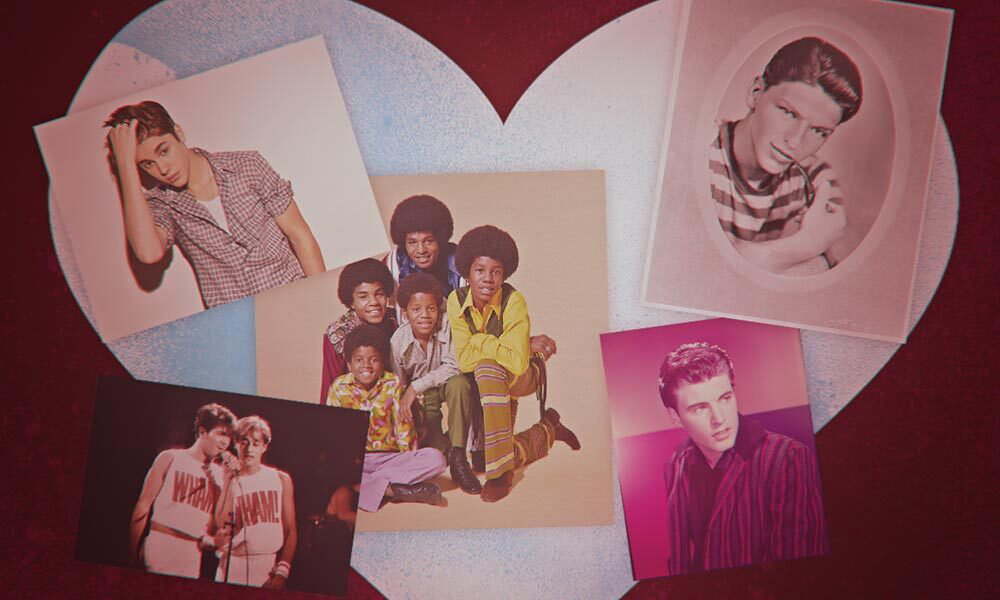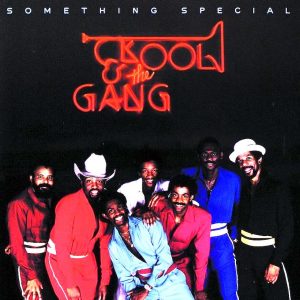Before Disney created a factory-line assembly of teen idols to take over the world and Justin Bieber redefined global pop stardom with his army of Beliebers, the practice of promoting attractive, clean-living male singers to teenagers looking for romance from their pop idols goes back to the very beginnings of the pop music business.
Frank Sinatra
As World War II was drawing to an end, one artist above all was offering an exciting alternative to the darkness of those war years. Known to admirers simply as “The Voice,” he initially appealed primarily to girls ranging from around 12 to 16 years old. These girls were known as bobbysoxers, thanks in part to the fashion of rolling their bobby socks down to the ankles below their poodle skirts, and in part due to the rule that shoes had to be removed at high school dances so as to avoid damage to the gymnasium floor, where these “sock hops” were held.
Frank Sinatra – The Voice – was king of the bobbysoxers, who queued overnight for tickets to his shows. In a November 1944 concert review from The New Republic magazine, he is described as “a pleasant-appearing young man in an expensive brown tweed coat and brown doeskin trousers”, who awkwardly moves to the center of the stage to a cacophony of shrieking from his adoring fans: “A few of them slump into their seats, either fainting or catching their breath.” Handsome, unthreatening, and clean-cut, Sinatra must have seemed to Columbia Records like so many pennies from heaven.
Ricky Nelson
But not every label was as wise to the importance of the teen-pop market. Verve, the pioneering New York jazz label, was known for its stylish music made by artists you certainly wouldn’t take home to meet your parents, selling 50,000 copies of a single at best. So, when guitarist Barney Kessel was given permission to make a pop recording for the label, it came as something of a shock when it sold a million copies. The record in question was the double-A-side “I’m Walking” and “A Teenager’s Romance” by Ricky Nelson, who was able to exploit his parents’ popular TV show to give the song the exposure it needed. Yet despite this, Verve allowed the young sensation to walk away. Nelson instead signed a lucrative deal with Imperial Records, who benefited from hit after hit; across 1958-59, he had more smash records than even Elvis Presley, whose style of rock’n’roll Nelson had so admired. But while Nelson may have loved the rockabilly Sun Records sound, his own releases were less raw, more polished, and, ultimately, less threatening.
A blend of youth, obtainability, and innocence
By the mid-50s, the key ingredients for stardom were being distilled by record labels across the US. A welcoming blend of youth, obtainability, and innocence would provide access to the teen dollar – and yet that indefinable star quality was something that could never be manufactured, with teenagers (as they were becoming known) too cute to be sold a lie.
One of the youngest singing sensations to sweep the nation would be 13-year-old New Yorker Frankie Lymon, who, along with his group The Teenagers, would have a No.1 smash with the timeless “Why Do Fools Fall In Love?” in early 1956, beating off competition from more sexualized newcomers such as Elvis Presley and Carl Perkins. His audience was looking for romance, not sex, and the torment of unrequited love felt in Lymon’s hit was easy for the listener to identify with. The theme was soon to be repeated, as The Drifters made it even more direct in their 1957 hit “Fools Fall In Love”: “Fools fall in love just like schoolgirls/Blinded by rose-colored dreams.”
Lymon’s fellow New Yorker Dion DiMucci would mine a similar seam with his 1959 smash hit “Teenager In Love,” with its refrain, “Each night I ask the stars up above/Why must I be a teenager in love?” Di Mucci’s 1963 album Donna The Prima Donna is an exceptional piece of marketing, with his bright-white teeth smiling sweetly through his adorable baby face on the cover, while inside he melts hearts with songs such as “Donna,” one of the era’s finest examples of teen pop.
A similar – if more cynical – approach to this market was being employed in the UK, where showbiz impresario Larry Parnes employed good-looking young male singers on a weekly wage, before marketing them heavily to exploit their looks and talent. “Mr. Parnes, shillings and pence”, as he was known in the press, had a “stable of stars”, each of whom he gave a new identity – Ron Wycherley became Billy Fury; Reg Smith was christened Marty Wilde.
Parnes not only gave each singer a new moniker, but he also managed their public appearance, ensuring each boy’s haircut was slicked-up high and that they knew how to present themselves so as to have mass appeal. As the BBC broadcaster Bob Harris observed, “Larry Parnes was possibly the Simon Cowell of his generation. He had a stable of artists that he applied a set of rules in terms of building and promoting their careers.” When asked at the time whether they felt they were being manipulated, rather like puppets on a string, Vince Eager (born Rod Taylor) responded: “It all amounts to having faith in your manipulators.”
Groups replace solo stars
As the 60s progressed, however, the times were a-changing. Groups became more desirable than solo singers, and following in the footsteps of The Beatles and The Rolling Stones, these groups began to take more control. And yet it was by following in Parnes’ footsteps that Beatles’ manager Brian Epstein was able to sell his protégées. He put them in smart suits, had them present themselves cleanly and politely, and made them appeal to a family audience. However, with The Beatles’ sex appeal a threat to the teen market, rival groups, such as Herman’s Hermits, were put forward with the emphasis firmly on their clean-cut, non-threatening image. In the wake of the Brit Invasion bands, the US put into practice all its manufactured pop pedigree, creating the hit TV band The Monkees after auditioning hundreds of hopefuls, but the actor-musicians soon rebelled against their puppeteers and began to make more subversive music. However, the idea of a sitcom based around a musical group wouldn’t go away.
In Newport, Rhode Island, in 1965, brothers Bob, Bill, and Barry Cowsill decided to form a group. The three boys were soon joined by brothers John and Paul, their sister Susan and their mother, Barbara, the siblings ranging in age from 8 to 19 at the time of their debut hit for MGM, “The Rain, The Park And Other Things,” which made No.2 on the Billboard Hot 100 in 1967. Though The Cowsills continued to record for a number of years, they had few major hits. But their place in pop history is guaranteed thanks to their inspiring the hugely popular TV show The Partridge Family, which ran from 1970-74 and made a star of David Cassidy.
Though booked not for his singing thanks to his good looks, Cassidy played the part of lead singer Keith Partridge in the show, which followed the fortunes of a group of musical siblings, joined by their widowed mother as they (successfully) pursued their collective dream of stardom. And while the series may have appealed to the whole family, Cassidy’s particular androgynous good looks and cute charm seemed custom-made to appeal to teenage girls. His face was emblazoned on everything from magazine covers and posters to lunchboxes and board games. However, due to his contract with the TV station, Cassidy himself saw none of the thousands of dollars his face was earning. He became frustrated by what he saw as exploitation, telling the NME in 1972: “I asked my housekeeper to go and buy a certain kind of cereal and when she came home, there was a huge picture of me on the back. I can’t even eat breakfast without seeing my face.”
Cassidy began to rebel against his image, appearing naked (from the hips up) on the cover of Rolling Stone magazine in 1972. But this did nothing to dampen his fans’ ardor, and Cassidy continued to smash box-office records for his sell-out stadium tours until tragedy struck in 1974. At a show at London’s White City Stadium, pandemonium broke out, resulting in a stampede that saw hundreds injured, with one teenage girl dying from her injuries.
What The Partridge Family had shown was the appeal to this key audience of a family act. Two more of the biggest acts of the decade would exploit this – this time non-fictional families, namely the Jacksons and the Osmonds.
Changing of the guard
Perhaps the biggest sign that there was a changing of the guard in pop music came exactly as the 60s reluctantly handed over to the 70s. Though the Jackson 5 had been performing and even releasing records for some time under one guise or another, it wasn’t until they left Steeltown Records in their native Gary, Indiana, for the might of Motown that they smashed their way to the top of the pops. January 1970 saw their debut Motown single, “I Want You Back,” shoot to the top of the Billboard Hot 100. The follow-up, ‘ABC’, knocked The Beatles’ “Let It Be” from the top spot in April – a feat they repeated in July, with ‘The Love You Save’ replacing the Fabs’ ‘The Long And Winding Road’ at the top.
Their success saw Motown issue a huge amount of Jacksons 5 product, with the label issuing four albums by the group is just one year. Jackson 5’s obvious youthful appeal was a marketing dream, and their J5 “heart” logo was soon licensed on lunchboxes, posters, stickers, a board game, and all kinds of other merchandise. They even had their own Saturday-morning cartoon series. But all was not well behind the scenes, and the group split from Motown in 1975, unhappy with their royalty rate, and (with the exception of Jermaine Jackson, who was married to Motown head-honcho Berry Gordy’s daughter) they signed with Epic Records as The Jacksons. Epic would, of course, benefit hugely from the young Michael Jackson’s unparalleled success as a solo artist.
Meanwhile, another family was also making waves in the charts. Originally a group of sibling barbershop singers, The Osmonds had been regulars on Andy Williams’ TV show throughout much of the 60s, but it wasn’t until 1971 that they finally hit the big time – thanks to a record that Berry Gordy turned down for the Jacksons. “One Bad Apple” was written by George Jackson (no relation) with the Motown sensations in mind, but became a chart-topper for The Osmonds after they heard it at Rick Hall’s legendary FAME Studios in Muscle Shoals.
Seen by some as “the white Jacksons”, The Osmonds used Donny’s energetic vocal in much the same way Gordy used Michael Jackson’s, to the point that a number of their hits were credited solely to Donny – including Paul Anka’s “Puppy Love” and the US number one “Go Away Little Girl” (a Goffin-King song that had already been a hit twice in the past decade).
“Osmondmania” saw the group, like the Jacksons, immortalized in cartoon form on a Saturday-morning TV series, and saw them break big internationally – as a family they would score 13 singles on the UK chart in 1973 alone. In his 1974 NME review of their Saturday-night concert at The Rainbow in London, the writer Charles Shaar Murray comments that two nights earlier, his front-row seat at the same venue to see The Rolling Stones had cost £1.50. His seat for The Osmonds, three-quarters of the way back, cost £2. The power of the teen pound was evident.
Murray also draws a distinction between Osmonds fans and those of more “serious” acts: “With most bands (including T. Rex, Slade, Bowie, and the Sweet) the interest starts with the music and spreads outwards to encompass the appearance and personalities of the people who make it. With The Osmonds, the process was reversed. Their fans fell in love with their (allegedly) pretty faces, and a considerable amount of infatuation was built up. At this concert, there was around £6,000 worth of infatuation…”
Such a clean-cut group was an easy sell, and their strong religious faith glued them together as a family in the face of the pressures of their fame. Down the years, their popularity remained – either as a family group or as solo acts Donny, Marie, and Jimmy – and they continue to perform in one form or another to this day.
Things might have been very different for both Donny Osmond and Michael Jackson, however, had the timing of one particular recording been different. The two-child stars would become lifelong friends and, after Michael’s death, Donny recalled how Michael’s career-changing hit “Ben” was initially meant for the Osmond’s singer. “Don Black and Walter Scharf had written a song called ‘Ben’ for a film of the same name,” he recalled. “I spoke to Don only recently and he said: ‘We were looking for a young male vocalist and we wanted you to sing it; we wrote it with you in mind, but you were on tour with your brothers and we had to get it recorded as the film was finished. So we got Michael Jackson to sing it; we just defaulted to him.’ It became Michael’s first solo No.1 and it could have been mine! Fate has a funny way of changing things doesn’t it?”
Small screen idols
If anything, the practice of selling non-threatening, clean-cut, bubble-gum pop to teenagers only increased in the 80s and 90s. In the mid-80s, the English pop manager Simon Napier-Bell decided he wanted to make his charges Wham! the biggest band in the world: “We realized that if we could make Wham! the first band ever to play in Communist China, then we’d get so much press that it would break them right across the world.” A novel approach, but one he believed could only work with a band with the innocent image that Wham! then enjoyed. As Napier-Bell told Selina Scott in 1985: “I could see what was happening in China and they were genuinely opening up and they were aware that Western youth culture was going to come And I felt perhaps that Wham! would be, for them, a way of doing it gently rather than plunging straight in with, say, Boy George.
Soap operas – particularly of an Australian bent – would provide more fertile ground from which to pick pre-prepared boys already popular with the young audience. Following Kylie Minogue’s success in the charts, PWL Records in the UK launched Jason Donovan’s career with a string of hits, capitalizing on his popularity in the tea-time soap Neighbours. His success opened the gate for more to follow, such as Craig McLachlan and Stefan Dennis, with the teen pop poster magazine market seemingly insatiable.
Of course, it made sense to the record companies that selling someone who was already popular took much of the risk out of investing in a new artist’s career, and the next logical progression was a return to the tried-and-tested vehicle of the talent show. When English entrepreneur Simon Fuller launched Pop Idol, even he could never have dreamed of the phenomenal global success the franchise would become. One of the show’s judges, Simon Cowell, who had previously scored successes with Robson & Jerome, as well as Westlife and Teletubbies, launched X Factor, a rival show that ultimately usurped the Idol franchise. These shows, and others of their ilk, have launched the careers of a conveyor belt of well-packaged, wholesome pop stars, whose appeal has broadened out from simply the teen market to include people of all ages, with stars such as Will Young, Gareth Gates, Girls Aloud and One Direction.
But in the fast-moving world of pop, even these shows would soon begin to seem like relics from a different age, like the internet, and sites such as YouTube, allowed artists to communicate directly with their fans in a way hitherto unimaginable. And it was through YouTube that New Yorker Scooter Braun first encountered the young boy who would go on to sell an estimated 75 million records worldwide – so far. As he told the BBC’s Music Moguls documentary: “I clicked on [a YouTube link] and it was this 12-year-old boy, and this little kid had such soul I just had to find him.”
Justin Bieber was signed by Braun after getting 60 million views on the website. This was uncharted territory but has since become the norm. “At the time, no one signed acts off YouTube and no one cared about YouTube hits,” said Braun. “To now see it become the status quo of how A&Rs decide if someone has popularity is very flattering in a way, and also funny because literally I was told I was crazy at the time.”
With so many of these teen idols now grown up, where does the industry focus its efforts next? The next stars of TikTok, the impeccably manicured boy bands of K-pop?
But, from Sinatra, Frankie Lymon, and Michael Jackson, through Pop Idol and X-Factor to Justin Bieber, one thing has remained constant, and that is the appeal of a good-looking young man: charming, non-threatening, wholesome and handsome. It’s what pop music is built on.




